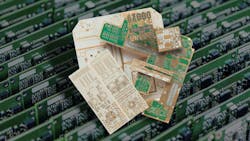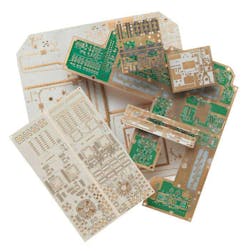How to Design a Better PCB
This article is part of the TechXchange: PCB Tools and Technology.
Members can download this article in PDF format.
The right printed-circuit-board (PCB) design can make or break a project, which is why it’s important to have the proper materials and expertise from the get-go. PCB fabrication and manufacturing starts with the right design, and far too many PCBs are the result of cheap engineering or designers who aren’t equipped with specialized knowledge and experience.
PCB design basics are important because multiple extensive revisions can seriously delay the completion of your project, costing you time and money. It’s important to work with engineering experts from the beginning so that you can design for manufacturability and ensure a final, cost-effective product that works efficiently.
In this guide, you’ll learn about common design mistakes and considerations you should know before submitting your next PCB order.
Designing for Different Types of PCBs
One of the first steps in the PCB layout process is creating a schematic, which refers to the design at the electrical level of the board’s purpose and function. In developing the schematic, the principal engineer will determine whether the materials and components can work within a double-side layer or whether more layers are needed (see figure).
If you want a PCB to work correctly, you must follow the appropriate design rules, which can vary depending on the type of board and its intended function. Examples include:
- High-speed PCBs, which are often found in computers, servers, routers, and amplifiers or any type of project where speed is crucial, are defined by having a high layer and signal count. These types of boards often involve processor speeds, DDR signals, and many differential signals. When it comes to design, it’s important to determine whether any controlled impedance circuits are on the board. The answer will determine whether there are signal-ended circuits or differential pairs. In addition, specific design rules must be followed depending on the impedance.
- RF and microwave PCBs are typically designed and manufactured using advanced composites with very specific characteristics for dielectric constant (Er), loss tangent, and coefficient of thermal expansion (CTE).
- High-density interconnect rigid-flex PCBs are characterized by a higher layer count, thin lines, closer spaces, and more dense wiring, with features that allow for a faster connection while reducing the size and bulk of a project.
PCB Design Best Practices and Top Tips
Before you get started with your next PCB project, keep the following considerations and tips in mind:
- Use state-of-the-art equipment: Many providers try to cut costs by using low-end equipment, but this also means the technology is less advanced.
- Understand that you get what you pay for: This adage is especially true when it comes to PCBs. It’s important to understand that many factors affect price — the number of layers, PCB size, how many boards you’re ordering, turnaround time, material selection, and technology. Cheap PCB providers aren’t concerned with quality; they just want to quickly design a circuit board and get customers in and out the door.
- Remember that communication is key: It’s important to communicate with the PCB provider or flex application engineer during the beginning of any design project. Open and honest communication ensures everyone is on the same page, which can eliminate roadblocks or the need for multiple design revisions. A PCB is rarely designed perfectly from the start, but constant communication will ensure that any revisions aren’t major ones that will thwart your projec
- Consider the environment in which the board needs to function: For example, is the PCB designed for a non-extreme environment like a home appliance, or high-intensity surroundings such as a firearm or explosion?
- Understand the electrical parameters before starting any PCB design: This includes current maximums, voltages, signal types, capacitance limitations, impedance characteristics, shielding considerations, and the type and location of circuit components and connectors.
- Use the right schematic capture tool: Lots of PCB design tools are currently on the market, including both paid and free options. Popular choices include Allegro, Altium, and Mentor’s PADS.
- Adhere to design rules and requirements: This is largely dictated by standards and acceptability criteria from the IPC, which is the industry association for PCB and electronics manufacturing. These standards tell you everything you need to know regarding PCB manufacturing.
Conclusion
Your time is valuable, which is why you want to design a PCB correctly from the beginning. It’s worth repeating that PCBs often need to be tweaked during the design phase, but these tips and considerations should help you create the best product with as few challenges and delays as possible.
Read more articles in the TechXchange: PCB Tools and Technology.
About the Author
Don Kaufman
Business Development Manager, Cirexx International
Don Kaufman, a senior member of the Cirexx International team, has more than 33 years of technical experience in the printed-circuit-board industry. He possesses an extensive knowledge of integrated circuits, materials, specialty laminates, chemicals, and equipment. He also prides himself on staying up-to-date with the latest techniques and procedures in PCB layout and manufacturing.

